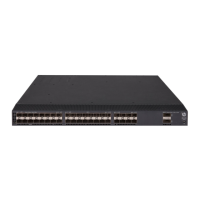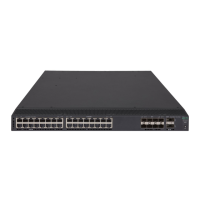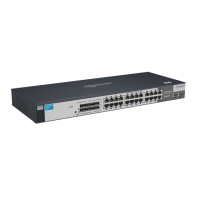101
Configuring MAC authentication
Overview
MAC authentication controls network access by authenticating source MAC addresses on a port. The
feature does not require client software, and users do not have to enter a username and password for
network access. The device initiates a MAC authentication process when it detects an unknown source
MAC address on a MAC authentication-enabled port. If the MAC address passes authentication, the
user can access authorized network resources. If the authentication fails, the device marks the MAC
address as a silent MAC address, drops the packet, and starts a quiet timer. The device drops all
subsequent packets from the MAC address within the quiet time. The quiet mechanism avoids repeated
authentication during a short time.
NOTE:
If the MAC address that has failed authentication is a static MAC addre
ss or a MAC address that has
passed any security authentication, the device does not mark the MAC address as a silent address.
User account policies
MAC authentication supports the following user account policies:
• One MAC-based user account for each user. The access device uses the source MAC addresse
s in
pac
kets as the usernames and passwords of users for MAC authentication. This policy is suitable fo
r
an insecure environment.
• One shar
ed user account for all users. You specify one username and password, which ar
e not
neces
sarily a MAC address, for all MAC authentication users on the access device. This policy
is
suitable for a secure environment.
Authentication methods
You can perform MAC authentication on the access device (local authentication) or through a RADIUS
server.
Local authentication:
• MAC-based accounts—The access device uses the source MAC address of the packet as
the
u
sername and password to search the local account database for a match.
• A shared account—The access device uses the shared account username and password to search
the local account database for a match.
RADIUS authentication:
• MAC-based accounts—The access device sends the source MAC address of the packet as
the
u
sername and password to the RADIUS server for authentication
.
• A shar
ed account—The access device sends the shared account username and password
to the
R
ADIUS server for authentication
.

